Lesser house fly
Fannia canicularis
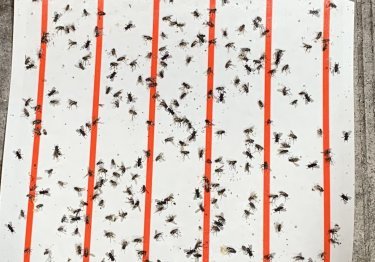
These flies can swarm in farms and cause stress for the animals and degradation of the final products by contamination. The larvae develop in droppings and manures. Adults are restricted to livestock buildings and their surroundings.
Lesser house fly
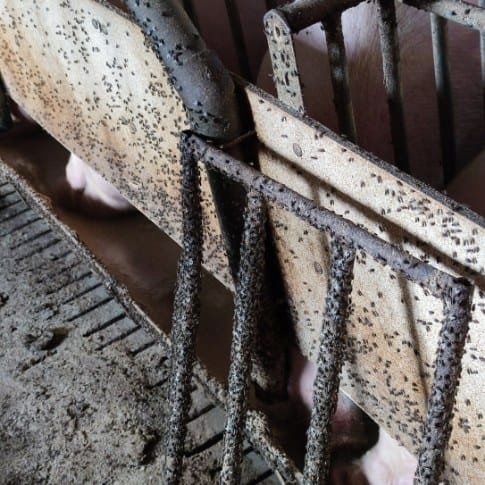
Life cycle
The females lay their eggs in moist organic substrates (particularly poultry droppings).
Hatching occurs in 24 to 4 hours depending on the temperature. The larvae develop in 8 to 10 days until the pupation phase which lasts 8 to 12 days.
Fannia canicularis live an average of 14 days. All stages of the fly can diapause during the winter. In the spring or when the temperature is sufficient, their cycle resumes.
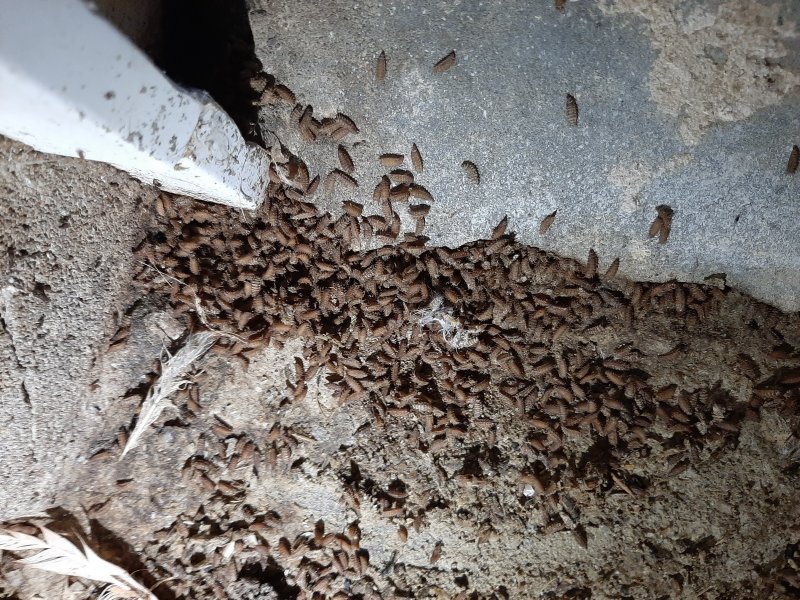
Identification
Egg: about 0.9 mm, elongated shape, transparent white laid on the food substrate.
Larva: 1st and 2nd instar measure 1.5 to 3 mm and are white. The 3rd instar browns and measures up to 7 mm. The larva and pupa of the species is characterized by the presence of many setae (hairs).
Pupa: resembles darker and less mobile 3rd instar larvae.
Adult: males have large eyes that almost touch at the top of the head, females have smaller eyes that are less close together. The small house fly can be distinguished from the house fly: (1) its size is smaller, about 2/3 of its length (4 to 7 mm); (2) it has only 3 brown-black bands on the thorax, more visible on females; (3) the 4th longitudinal vein of the wings is straight and (4) the abdomen is dull black, the male has yellowish spots on the back and sides, the females only on the back.
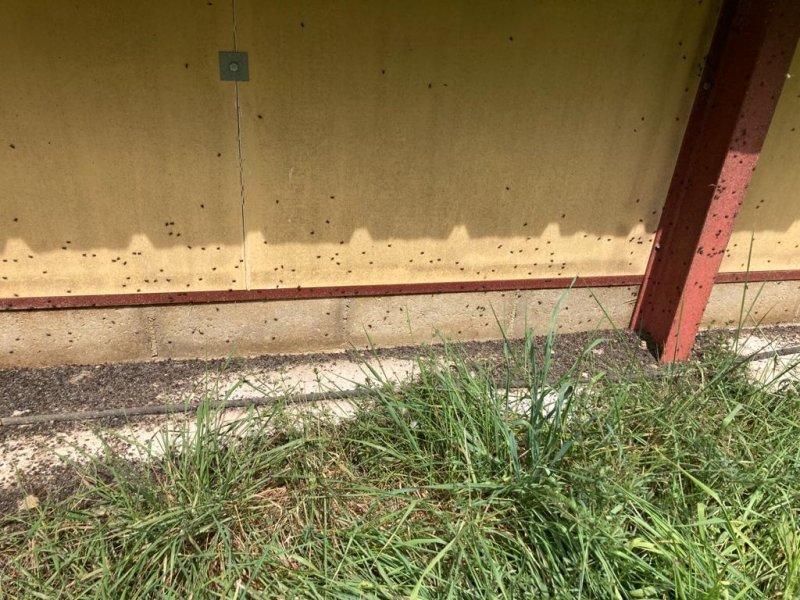
Natural habitat and behavior
Adults are good fliers and can move from farm to farm. These adults are attracted by the smells of manure contained in buildings.
The larvae develop in these manures.
Fannia canicularis often develops in poultry farms (laying hens) but also in dairy farms.
The life cycle is accelerated with warm temperature.
Nuisance/ economical damage
Although they do not bite, these flies can cause several types of inconvenience. Their proliferation is often a source of stress for the animals and for the breeder. They can also soil products such as eggs or packaging. Their presence in large numbers also spreads germs.
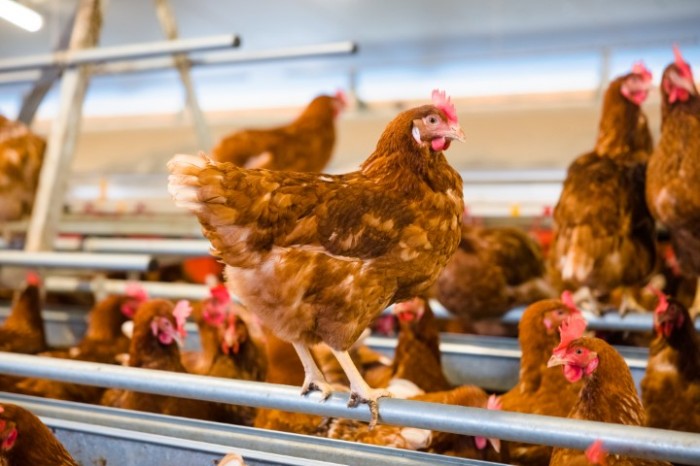
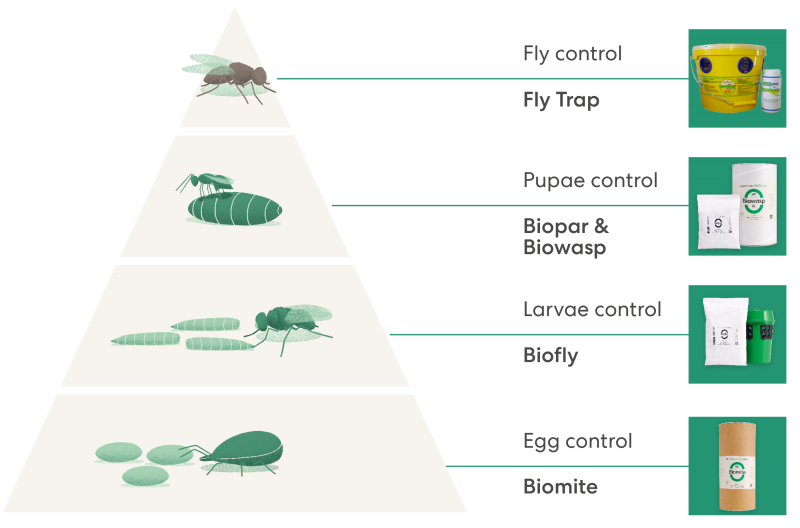
Get in touch
A successful approach to biological fly control isbased on strategically planned releases.
Pleasecontact us to discuss the possibilities.

